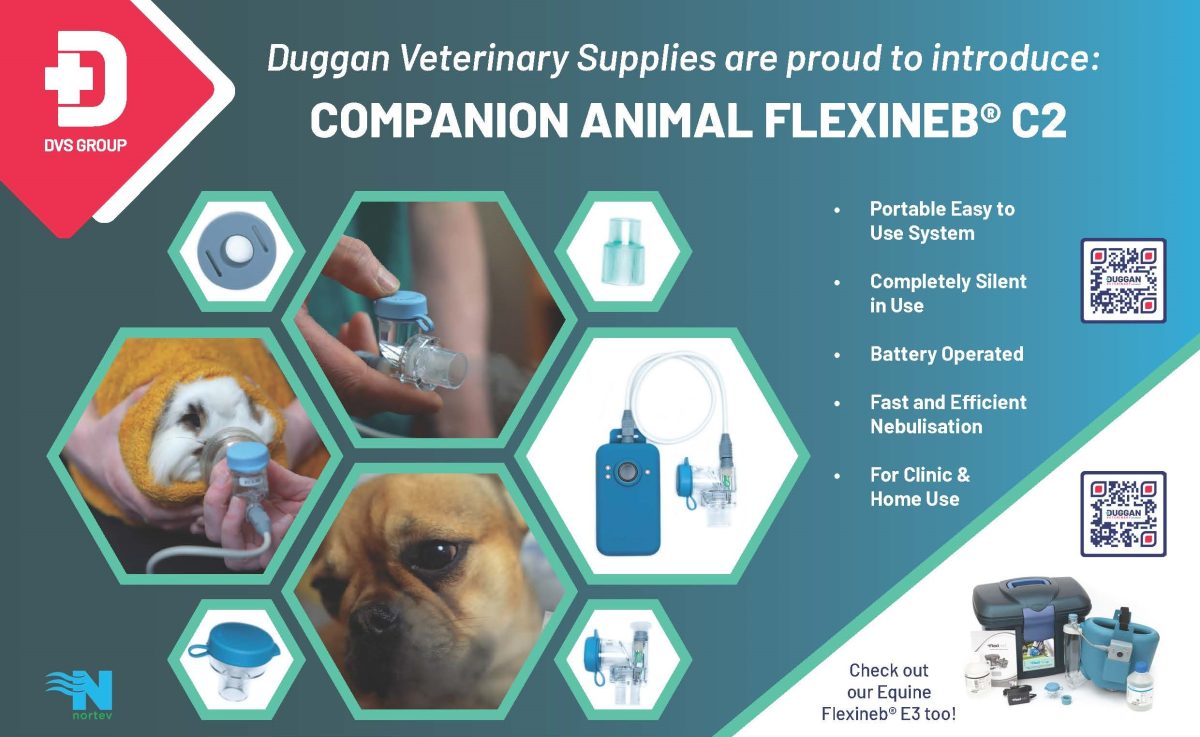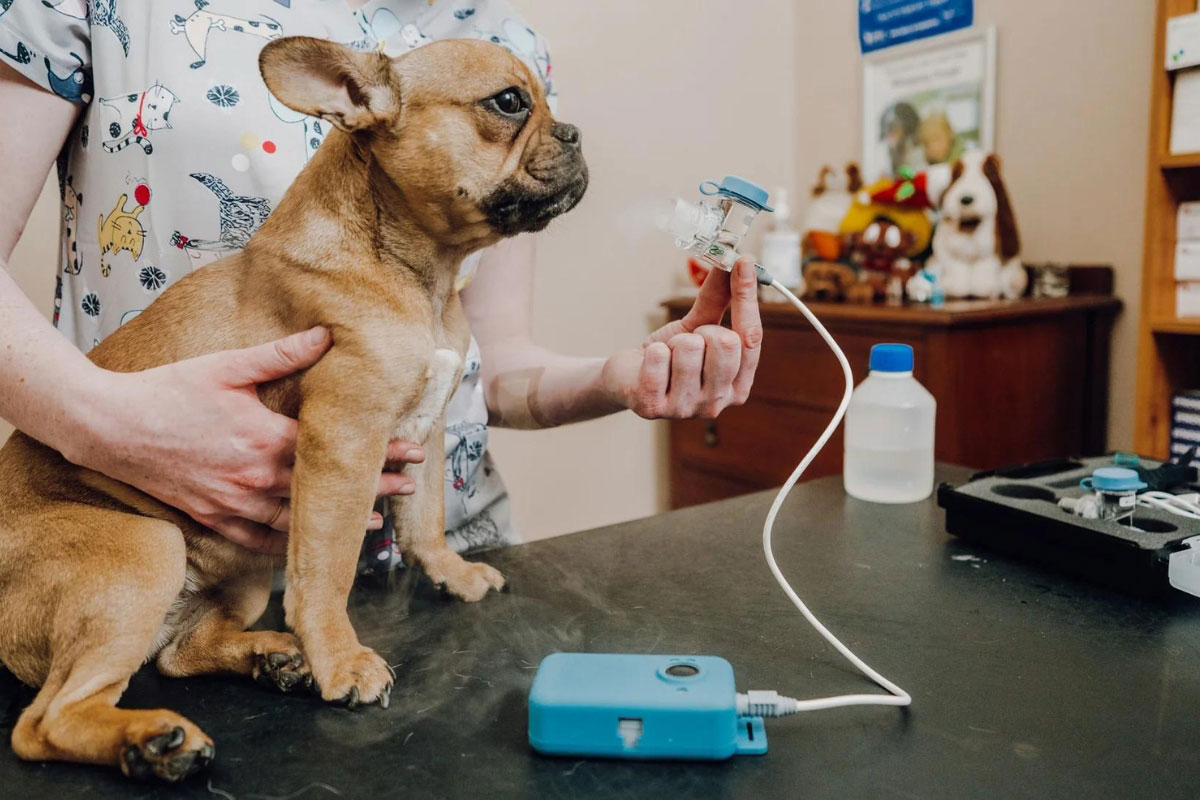Irish vets and nurses will be familiar with the Flexineb E3 for equine nebulisation. This product has revolutionised the treatment of respiratory disease in our equine animals, and has become the forefront of the delivery of inhaled treatments.
Now Duggan Veterinary Supplies are proud to announce the new Flexineb C2 Companion Animal Nebuliser, which is an exciting addition to any small animal practice. The Flexineb® C2 nebuliser is a portable, re-usable, silent nebuliser that converts liquid medications and natural therapies into a fine aerosol for inhalation by small animals.

Nebulisation of companion animals and exotics offers a stress free method for the administration of medications in a form that enables droplets of a suitable size to enter into the lung tissue and deliver the active ingredient directly to the source of inflammation, infection or constriction. A number of different medications can be nebulised by the Flexineb C2, helping vets to reduce the possible side effects of the administration of parenteral medications.
The Flexineb C2 nebuliser is cost effective, easy to clean and easy to maintain – this means owner compliance is improved in the use of the nebuliser in chronic cases. The device plays a key role in veterinary practices in the ‘hands off’ treatment of stressed dyspnoeic cats and dogs, chronic treatment of diseases such as feline asthma, medical treatment of upper respiratory infection and inflammation in cases such as cat and rabbit flu, and importantly will play a vital role in assisting in the safe recovery of brachycephalic animals post airway surgery.
Donnacha Duggan, Director, noted: ‘We are delighted to offer the Flexineb C2 as the smaller cousin to our Equine Flexineb E3 to the Irish and UK markets. In a time when the numbers of brachycephalic patients needing airway surgery are increasing, Duggan Veterinary Supplies are pleased to introduce cutting edge technology to assist veterinary practitioners in providing the highest standard of care for their patients.’



